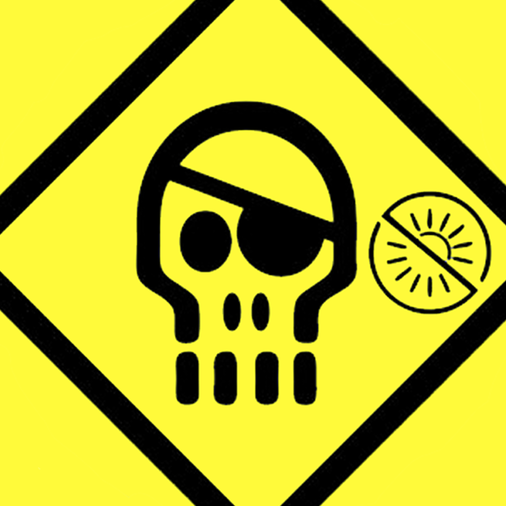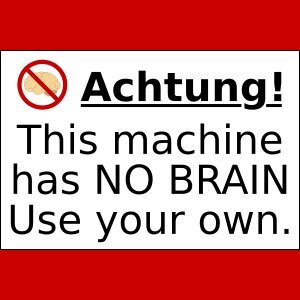Why are 3D printers still stuck on stepper motors? Why haven’t we transitioned to servo motors with encoder feedback for positioning?
Is it just too cost prohibitive for the consumer-level? We would be able to print a lot faster and more accurately if we had position feedback on the axes. Instead we just rely blindly on the stepper not skipping any steps when we tell it to move, hoping for the best.
Have you seen how fast printers with stepper motors can get? They print benchies in less than 3 minutes. The bottleneck is not the motion system, it’s either the hot-end or the part cooling. Also stepper are super accurate and very flexible. Drivers are advanced and can tune for torque, speed, sound etc. Collision detection and skipped step detection is also a thing.
Not disputing, I want that 3 minute benchy. Where does one find this magic?
The print as absolute shit though. Literal garbage.
Looks pretty good for the speed to me! This is an experiment. Someone will be able to build on that and make it better.
https://youtu.be/f5OHYZbrHjs?si=LruE_T63UnlSRWa0
This is as fast as I’ve seen for PLA while still retaining good quality. And he probably could go faster with more powerful motors or more of them.
Honestly, there’s going to be a hard peak to how fast a 3D printer can go, because physics. Unless we start running prints in a vacuum and start tuning local gravity….
There will always be limits to how fast you can go. But as long as the average printer is not even close to whats doable there is room for improvement.
That’s much much nicer. I’ve been looking at the bamboo x1c, its speed and quality is pretty amazing right out the box.
Here is an alternative Piped link(s):
https://piped.video/f5OHYZbrHjs?si=LruE_T63UnlSRWa0
Piped is a privacy-respecting open-source alternative frontend to YouTube.
I’m open-source; check me out at GitHub.
Speed Benchys mostly are garbage quality.
This is mostly a cooling issue. Not being able to solidify the plastic fast enough after it’s been deposited.
No shit lol
Here is an alternative Piped link(s):
https://piped.video/IRUQBTPgon4
Piped is a privacy-respecting open-source alternative frontend to YouTube.
I’m open-source; check me out at GitHub.
Tune up a coreXY like a Bambu or Voron, use all the latest features in marlin (like MPD thermal and linear advance.)(I assume other firmwares have similar.
Yeah does anyone have a link to a 3 min bench print?
3 minute benchy
It’s custom made printers and it makes shitty prints.
https://www.youtube.com/watch?v=IRUQBTPgon4Here is an alternative Piped link(s):
https://www.piped.video/watch?v=IRUQBTPgon4
Piped is a privacy-respecting open-source alternative frontend to YouTube.
I’m open-source; check me out at GitHub.
In addition to the other points made… steppers maintain full torque even when it’s not moving, so it’s better at braking tool heads.
Also? Steppers have a higher precision to a servos higher speed and torque (but torque that’s not constant.)
Finally they have a better response time. This isn’t the speed, so much as the speed that control inputs are reflected. Imagine all the tiny wibbles a printer makes during infill, the changes in direction would be sloppier with a servo.
Steppers have a higher precision to a servos higher speed and torque (but torque that’s not constant.)
Just trying to understand this. Then how come all CNC precision machines use a servo instead of a stepper? I mean there are some ridiculously accurate machines that can position itself over and over varying under a micron (<.001mm) but the manufacturers choose servo over stepper. Is it for the sake of holding torque that servos have to be used over steppers?
All the DIY CNC machines I’ve seen use larger stepper motors. The commercial CNC machines I’ve seen can cost $10,000 to hundreds of thousands.
It seems like the argument is that at the lower price bracket, stepper motors offer higher performance than what a equivalently priced servo+encoder+controller combo can perform.
I felt like what I was reading in this thread wasn’t matching up with that I see out in industry… concerns about ‘price’ didn’t come up until your post.
Diamond turning machines are inherently low torque, low speed, AND nanoscale operations which uses servos for driving its respective axis. See precitech -youtube and in stark comparison Roeder’s 5axis optical mold machining. Wire EDM’s were all driven by servo motors until linear motors became popular. Even those famous JingDiao test samples are made on machines driven by servos.
Here is an alternative Piped link(s):
Roeder’s 5axis optical mold machining
Piped is a privacy-respecting open-source alternative frontend to YouTube.
I’m open-source; check me out at GitHub.
That’s actually exactly my point, steppers are objectively inferior to servos when it comes to dynamic positioning (which is what 3D printing is), but servos are too expensive compared to performance gains for hobbyists.
I don’t think the sentence you have is entirely accurate.
High cost servo systems (motor, encoder, and driver) are superior to high cost strippers for dynamic positioning. Even that can be tenuous for low torque low speed applications, or nanoscale applications, etc… Certainly for 3 axis table/gantry CNC systems (router, laser, 3d print) for commercial/industrial grade applications servos are superior.
If you’re aiming for a hobbyist price point steppers have better dynamic positioning performance than servos. You can build a $300-$1000 3d printer with servos, but especially at the low end, it’s not going to be good.
But that just highlights the statement/question in my OP, it’s just cost prohibitive to use servos as a hobbyist. You will as a hobbyist get a better system with (proper) servos, but not for a reasonable price point.
Do you want to have a conversation, or do you want people to agree with you?
Your post is phrased like a question, but your comments feel like the opposite.
If you are buying industrial grade 1000+ dollar servos you are no longer “hobbyist” in the price range that hobby level 3D printers exist steppers are more precise than servos.
in the price range that hobby level 3D printers exist steppers are more precise than servos.
Yes that’s exactly what I’m saying…it’s the cost that’s in the way of the switch, not that steppers are the best solution. They’re only the best solution within the price constraints we have as hobbyists.
I don’t know why you’re getting down voted. You’re correct, steppers are used due to cost.
You will not get a better system when using servos no matter the price point at the moment. People have tried and failed just because the software support isn’t there yet for 3d printing.
The biggest issue I’m aware of is matching the timing between the extruder stepper and the servos that do the XY motion.
Which isn’t apparent at lower speeds but at higher speeds you can notice they’re no longer in sync which leads to all sorts of issues and artifacts.
I’m currently waiting on some 3 phase steppers and drivers to test to hopefully get something with less speed deviation than a normal 2 phase stepper and more reverse torque but don’t cost too much and are still easily driven by connecting a driver to your boards step/dir output.
Which makes them superior, which is why they are used. Cost can’t be ignored any more than the torque or speed, speccing parts that are considerably more expensive that achieve equivalent results is bad engineering unless you have a very specific application that requires it.
If it was ‘objectively inferior’ we wouldn’t use them. You build to your requirements, not by playing top trumps with competing technologies while ignoring the cost.
I disagree with all your points. What kind of servos are you talking about?
BLDC and AC servos maintain full torque at stop too, and have about 2-3× the torque of a stepper of similar size.
The only way a stepper can rival a servo for precision is with a high degree of microstepping, which is far from guaranteed positioning with open loop control.
I haven’t directly compared response time between steppers and servos, but I would be extremely surprised if there’s a significant enough difference to worry about. Most servo-controlled machines are larger and so are designed to accelerate slower than a printer, if that’s what you mean. This is intentional because inertia is a thing you have to worry about, not because the servo reacts to command changes slowly.
There are valid reasons steppers are used on printers, but it’s not because they have superior performance.
BLDC and AC servos maintain full torque at stop too, and have about 2-3× the torque of a stepper of similar size.
Huh, this is true about BLDCs as well? I remember seeing in a video that BLDCs tend to have very poor torque output when stopped and especially when at low speeds (due to very low efficiency requiring too high currents for drivers to supply), whereas AC motors have a pretty much flat torque curve until they get fairly fast. I’d be interested to know if this is true.
That sounds like a problem from using too small of a drive. Every torque curve I’ve seen for brushless DC or AC servos is constant torque from 0 to about 75% rated RPM, and then starts to drop off.
That sounds about right. You can technically achieve full torque at 0 RPM, but the current required for that might be very high (and may not be practical for the small size, power limits, and cost of a 3D printer). I know this is a problem in Asian import mini-lathes - if you run the spindle too slow you won’t get much torque out because the driver can’t supply enough current.
Closed loop steppers exist with the benefits of both worlds.
I mean, 3-axis robots move at 2000mm/s with 0.01mm accuracy with payloads weighing considerably more than 3D printer toolheads, using servos.
Yes. 2000m/s and 0.01mm accuracy unfortunately means nothing about acceleration and control.
Knowing your system, you can achieve that with motors that can only accelerate at 0.01m/s² and that cannot brake.
The 2000m/s and 0.01mm accuracy say nothing about the capability of the hardware in the case of multiple sudden direction changes.
That’s like saying “this car has a top speed of 200mph, and can reach any GPS coordinates precisely, so of course it can zigzag from side to side using 160° turns in a one way street at high speeds.”
The bottleneck is the extrusion and the cooling of the extrusion. Not the transport system.
2 km/s? That’s almost Mach 6.
Yea that’s why you have to wear hearing protection in factories.
Yeah that was a typo, obviously that was supposed to say mm/s
What’s the cost difference between the two?
But steppers can also be servo driven if encoder is providing feedback. Right?
Im not expert, but afaik servo driven DC motor is more expensive and more complex to drive compared to stepper motor approch. I think we also need open source firmware that supports servo control (maybe it exists already Im not sure)
back in the day before BLtouch existed, my printer used a servo to deploy a bed probe. Marlin definitely can control a servo. (That was on a ramps board with no extra shields, too)
I think you’re talking about those RC servos, no?
That’s a big difference between deploying a probe and handing the dynamic deceleration required for a high speed gantry move.
Stepper motors are considerably easier to lock in a single location than continuous rotation servos. When they are commanded to a certain position they will STAY THERE. This makes precise positioning considerably easier vs a continuous rotation servo, which must use a sensor feedback loop to ensure it stays close to where it needs to be. And any feedback loop will involve small amounts of extremely undesirable oscillation and movement about the target point…
besides. we can already drive steppers significantly faster than any hot end can melt plastic.
Well, that’s why you use a proper servo drive. Yes, technically they oscillate at standstill, but it’s so little it literally does not matter. Closed loop servo control is a solved problem unless you’re trying to implement it yourself.
Yeah the big issues with servos would be that even with very good controllers you’d end up having to constantly bump to the corner 0s just to ensure you got the right location. Stepper motors can be relied upon to hold the position.
Cost is the short version, yes.
I don’t know what kind of servos everyone here is talking about that are less precise than open loop steppers. Low quality hobbyist stuff, I guess? Proper servo motors & drives are the standard for good reason for robotics, industrial CNC machines, and pretty much everything else that needs powerful motors with high precision. Much higher power density, higher RPM (good for increasing torque with a gearbox), equivalent or better precision, plus closed loop control is a huge capability and safety gain.
That said, good, industrial quality servo motors are 1) expensive and 2) aren’t made in small enough sizes to be comparable to the steppers on most 3D printers. Even the smallest industrial servo + drive I’ve seen is about 5x as big as the steppers on a personal 3D printer and costs $800ish. Obviously, both are deal breakers for a personal 3D printer.
3D printers are a fairly ideal application for steppers. The moving parts are small and light, meaning you both don’t need a large motor and the danger of slippage is lower. Plus, steppers are cheap.
deleted by creator
Just to add on to this, I understand the technical benefits to steppers, but surely a stepper motor could be given some servo-like functionality by simply adding encoders to the stepper shafts. You can get rotational hall sensors with diametric magnets for a couple bucks each. Even if you weren’t using the encoders to operate the motors directly, you could use them for fault detection. An encoder with 10 bit accuracy could just about match the substeps of stepper motors for resolution.
Now, most of the time when a stepper gets out of, well, step, it’s because something’s gone wrong and you wouldn’t necessarily want the printer to correct it directly, but simply being able to pause on a fault and record the fault’ time and direction would make a big difference to troubleshooting.
I think it would be a better idea to use linear encoders if you were going to add encoders to the shaft, as that way you could directly readout the position of the tool along an axis without issues like backlash that would mess up your calculated position. This is what I’ve seen on (both manual and CNC) mills and lathes.
Doesn’t the “missed step detection” on the Prusa printers already achieve a lot of that? I think it monitors the current to the motor and flags any abnormal behavior, without needing extra hardware on the motor.
That’s not to knock the value of positional feedback, which is clearly superior, but just to say that I don’t think this idea has been entirely neglected.
New Lemmy Post: Why do we still use stepper motors? (https://lemmy.world/post/10524692)
Tagging: #3dprinting(Replying in the OP of this thread (NOT THIS BOT!) will appear as a comment in the lemmy discussion.)
I am a FOSS bot. Check my README: https://github.com/db0/lemmy-tagginator/blob/main/README.md
Uhh tagged as a 3dprint related post? How insightful, I bet I couldn’t have gathered that from the community name











